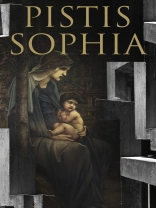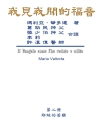Pistis Sophia is a Gnostic text written between the 3rd and 4th centuries AD. The existing manuscript, relates one Gnostic group’s teachings of the transfigured (resurrected) Jesus to the assembled disciples, including his mother Mary, Mary Magdalene, and Martha. In this text, the risen Jesus had spent eleven years speaking with his disciples, teaching them only the lower mysteries. After eleven years, he receives his true garment and is able to reveal the higher mysteries revered by this group. Cosmology is a primary focus of the Pistis Sophia – learning the structure of the universe and how to traverse it is considered key in these texts, and the cosmology is one of the most complex from any Gnostic text remaining today. in Pistis Sophia the Sophia, as major female divinity, originates and dwells outside of the divine realm. Her fall and redemption parallel that found in versions of the Sophia myth such as that in the Apocryphon of John, but the actions all take place in the material aeons, and she can only be restored to her place in the thirteenth aeon, outside the Kingdom of Light. The Pistis Sopha is a startling blend of early Christianity and Hellenic Paganism, with other elements such as reincarnation, Astrology, Mystery religion and Hermetic magic.
Sobre el autor
George Robert Stow Mead (1863–1933) was an English historian, writer, editor, translator, and an influential member of the Theosophical Society, as well as the founder of the Quest Society. His scholarly works dealt mainly with the Hermetic and Gnostic religions of Late Antiquity, and were exhaustive for the time period.












